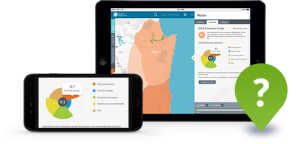Since 2000, Healthy Waterways has produced an annual Report Card which helps us understand and communicate the health of South East Queensland’s waterways, and identify issues that require intervention. Ecosystem health is assessed against relevant benchmarks, resulting in a single grade (‘A’ to ‘F’) for each freshwater, estuarine and marine system.
A = Excellent: Conditions meet all set ecosystem health values. All key processes are functional and all critical habitats are in near pristine condition.
B = Good: Conditions meet all set ecosystem health values in most of the reporting region. Most key processes are functional and most critical habitats are intact.
C = Fair: Conditions meet some of the set ecosystem health values in most of the reporting region. Some key processes are functional and some critical habitats are impacted.
D = Poor: Conditions meet few set ecosystem health values in most of the reporting region. Many key processes are not functional and many critical habitats are impacted.
F = Fail: Conditions do not meet set ecosystem health values. Most key processes are not functional and most critical habitats are severely impacted.
Rigorous science is applied to measure waterway health using a broad range of biological, physical and chemical indicators of ecosystem health. A total of 135 freshwater sites are monitored biannually, and 254 estuarine and marine sites are monitored monthly across South East Queensland and Moreton Bay.
How healthy is your local catchment ?
 The annual Healthy Waterways Report Card communicates the health of South East Queensland’s waterways, and identifies issues that require intervention. Ecosystem health is assessed against relevant benchmarks, resulting in a single grade (‘A’ to ‘F’) for each freshwater, estuarine and marine system.
The annual Healthy Waterways Report Card communicates the health of South East Queensland’s waterways, and identifies issues that require intervention. Ecosystem health is assessed against relevant benchmarks, resulting in a single grade (‘A’ to ‘F’) for each freshwater, estuarine and marine system.
Moving Forward
From 2015 onwards, the Healthy Waterways Report Card will expand to also report on the many social and economic benefits that our waterways provide. In addition, the environmental indicators have been reviewed to ensure the monitoring remains scientifically robust, relevant and cost effective.
